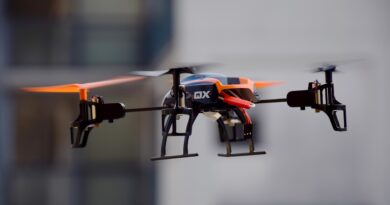Machine Translation vs. Human Translation: Pros and Cons
In today’s globalized world, the demand for translation service has skyrocketed. With advancements in technology, machine translation has gained significant popularity. However, the question remains: Can machines truly replace human translators? This article explores the pros and cons of both machine translation and human translation, shedding light on their respective strengths and limitations. By understanding the benefits and drawbacks of each approach, you’ll be better equipped to make informed decisions when it comes to choosing the right translation method for your needs.
Table of Contents
Pros of Machine Translation
Machine translation, powered by artificial intelligence and algorithms, offers several advantages that have contributed to its widespread adoption.
- Speed and Efficiency: One of the major benefits of machine translation is its speed. Automated systems can process large volumes of text in a fraction of the time it takes for a human translator. This makes it ideal for time-sensitive projects or situations that require quick turnaround.
- Cost-Effective: Machine translation can be more cost-effective than hiring a human translator, especially for repetitive or high-volume content. The initial investment in setting up a machine translation system may be higher, but the long-term savings can be substantial.
- Consistency: Machine translation systems deliver consistent results, ensuring that the same terminology is used throughout the translated content. This is particularly beneficial for technical or specialized texts where precision and consistency are paramount.
- Availability: Machine translation systems are available 24/7, eliminating the limitations of human availability and time zone differences. This accessibility makes machine translation a valuable resource for organizations with global operations and urgent translation requirements.
Cons of Machine Translation
While machine translation has its advantages, it also has limitations that cannot be overlooked.
- Lack of Contextual Understanding: Machine translation struggles to grasp the subtleties of language, including idiomatic expressions, cultural nuances, and context-specific meaning. This often leads to inaccurate translations that can be confusing or even offensive.
- Inability to Handle Complex Texts: Complex texts such as legal, medical, or literary documents require a deep understanding of the subject matter and specialized terminology. Machine translation systems may not possess the necessary domain-specific knowledge to accurately translate such content.
- Linguistic Limitations: Languages exhibit variations, dialects, and unique linguistic features. Machine translation systems may not be equipped to handle these intricacies, resulting in translations that may not fully capture the nuances and cultural nuances of the target language.
- Lack of Human Touch: Machine translation lacks the human touch and creativity that human translators bring to the table. Human translators can adapt the translation to the target audience, taking into account cultural sensitivities and local preferences, which is crucial for effective communication.
Pros of Human Translation
Human translation, driven by linguistic expertise and cultural understanding, offers numerous advantages that cannot be replicated by machines.
- Accuracy and Quality: Human translators possess the linguistic and cultural knowledge required to deliver accurate and high-quality translations. They can ensure that the translated content captures the intended meaning and conveys it effectively in the target language.
- Contextual Understanding: Human translators excel at understanding the context, tone, and subtleties of the source text. They can adapt the translation to suit the target audience, taking into account cultural differences and idiomatic expressions, resulting in a more accurate and natural-sounding translation.
- Domain Expertise: For complex subject matters, such as legal, medical, or technical texts, human translators with specialized knowledge can provide accurate translations that reflect the complexity and nuances of the content. They possess the necessary background to handle industry-specific terminology and jargon.
- Cultural Adaptation: Human translators can adapt the translation to the cultural norms and preferences of the target audience. They understand the importance of localization and can make adjustments to ensure the translated content resonates with the local readers, making it more engaging and effective.
Cons of Human Translation
Despite the strengths of human translation, there are certain drawbacks that need to be considered.
- Time-Consuming: Human translation is a time-intensive process, especially for large volumes of content. The need for human involvement can result in longer turnaround times, which may not be ideal for urgent translation requirements.
- Cost: Human translation can be more expensive compared to machine translation, especially for lengthy or specialized projects. The cost is influenced by factors such as language pair, subject matter, and the experience of the translator.
- Human Error: As with any human endeavor, human translation is susceptible to errors. Typos, mistranslations, or omissions can occur, although professional translators strive for accuracy and meticulously proofread their work.
- Subjectivity: Translations involve choices and interpretations, which can introduce some subjectivity. Different translators may approach a text differently, leading to variations in the translated versions. While this can sometimes be an advantage, it can also result in inconsistencies.
Conclusion
Machine translation and human translation both have their pros and cons. While machine translation excels in terms of speed, cost-effectiveness, and consistency, it falls short when it comes to contextual understanding, linguistic complexities, and cultural adaptation. On the other hand, human translation offers accuracy, contextual understanding, domain expertise, and cultural adaptation, but it can be more time-consuming and expensive. Ultimately, the choice between machine translation and human translation depends on the specific requirements of the project, the importance of accuracy, and the target audience’s expectations. In many cases, a combination of both approaches, leveraging the strengths of each, can deliver optimal results.



